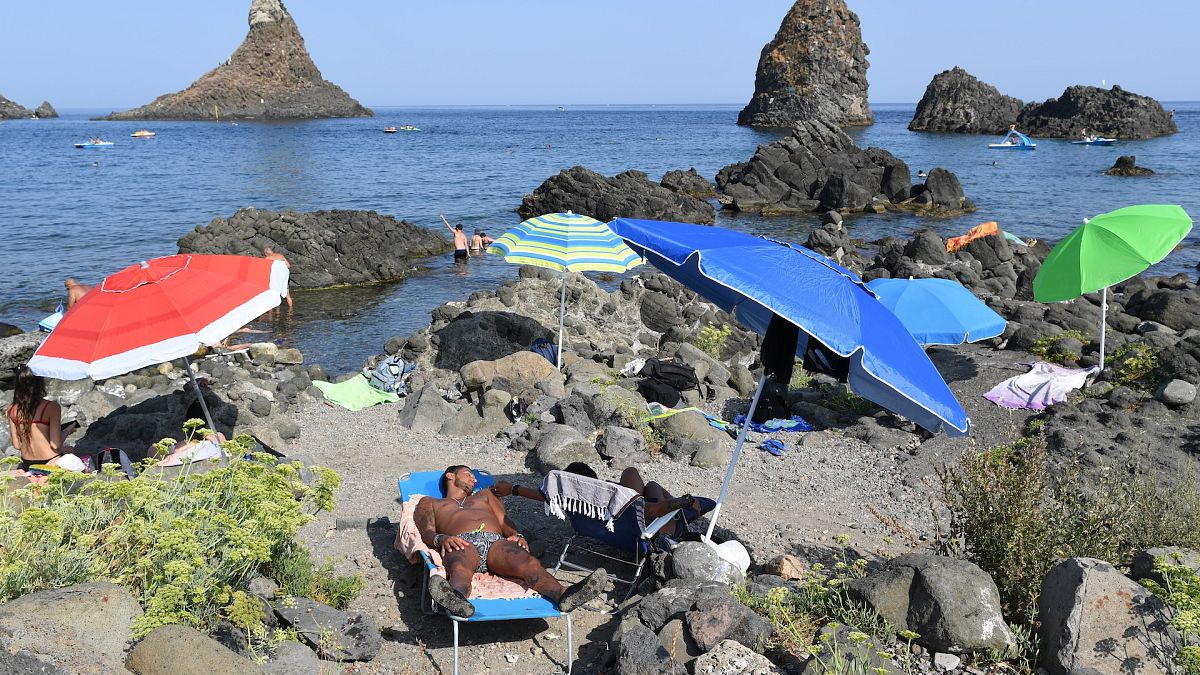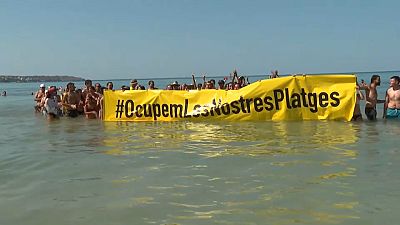The number of people going on holiday varies widely across the EU, highlighting significant inequalities. Euronews Business takes a closer look at where people are most financially restricted from taking time off.
Summer is holiday time for many in Europe. After a long seven months of work, August is a time to switch off and disconnect - with many flocking to picture-perfect destinations to soak up some sun.
Even so, a vacation away - for many Europeans - is still a privilege rather than a given.
According to Eurostat estimates, around 29% of people aged 16 and over in the EU were unable to afford a one-week trip in 2023.
In 2022, meanwhile, 62% of the EU population aged 15 and over travelled away from home at least once on a non-work trip. This only includes holidays of more than one overnight stay.
In other words, 38% of EU citizens didn't go away at all during the year for a personal holiday.
Eurostat doesn’t, however, specify whether this was for financial reasons.
Who in the EU is skipping holidays?
In Spain, the proportion of the population who can't afford a one-week holiday is 33%.
In Italy, this total is 32%, while France and Germany recorded results of 25% and 23% respectively.
With a total of 60%, many citizens in Romania are skipping holidays - as is the case in Bulgaria (44%) and Hungary (43%).
To look at countries in Europe but outside the EU, Norway is an outlier at the other end of the spectrum.
Here, only 7.9% of people are economically prevented from travelling.
Economic disparities within the EU
The differences between nations are "typically related to the strength of a country's economy," Professor Lynn Minnaert, Dean of the School of Hospitality at the Metropolitan State University of Denver, told Euronews Business.
"Countries at the bottom of the list have higher GDPs than those at the top of the list," she added.
Professor C. Michael Hall, from the Department of Management, Marketing, and Tourism at Canterbury University, said: "The level of disposable income is clearly important as this allows people to spend money on holidays.
"Disparities with holiday taking and expenditure reflect some of the broader economic disparities within the EU."
Another study from Eurostat, with data last collected in 2022, looks at the rate of the population travelling for personal reasons - only counting holidays with at least one overnight stay.
84% of people in the Netherlands took a vacation at least once in 2022, with Luxembourg (83%) and Finland (81%) coming next in the rankings.
Bulgaria and Romania sit at the other end of the scale, with only 28% of their populations travelling once in 2022.
While a decision not to travel could be tied to economic disincentives, there are other reasons why citizens may choose to stay at home. Professor Hall said that cultural and geographical factors also contribute to travel patterns.
Which countries spend the most on holidays?
According to Eurostat, average tourism spending per person varies significantly across European countries.
In 2022, Luxembourg had the highest tourism spending per night at €175, followed by Austria at €154, while the EU average was €87.
These figures reflect the spending of tourists based on their country of residence, rather than how much tourists visiting the specified country spend.
Among top economies, Germany had the highest spending at €109 per night. France (€84), Spain and Italy (both €72) came in below average.
People spend more on trips abroad
The average spend per night also varied depending on whether the trip was domestic or abroad.
'Domestic' refers to spending within one's own country, not within other EU countries.
Typically, people tend to spend more per night when travelling internationally compared to domestic trips.
In 2022, EU residents spent an average of €68 per night on domestic tourism and €117 per night on trips abroad.
In some countries, the average spending on domestic tourism was under €40 and even dropped below €30 per night, such as in Czechia and Latvia.
On domestic tourism, Austria had the highest average spending at €138.
Residents of a number of countries spent at least twice as much per night on foreign trips compared to domestic trips.
In 2022, this ratio was 3.7 in Latvia, followed by 2.8 in Czechia.
Regarding average tourism spending per trip, rather than per night, Luxembourg topped the list at €1,261. It was followed by Austria at €720 and Germany at €650.
Spending at home or abroad?
In 2022, EU residents spent an estimated €474bn on tourism trips, with the majority (53%) being spent on trips abroad.
In 17 of the 26 EU countries with available data, more than half of the tourism expenditure was allocated to trips in foreign countries.
Residents of Luxembourg spent the most on trips across borders, with 98% of their tourism expenditure going abroad, followed by residents of Belgium (90%), Malta (89%), Cyprus (84%), and the Netherlands (81%).
In contrast, over 70% of tourism spending by residents of Romania, Greece, and France was on domestic trips.
EU residents spent 6% of their tourism expenditure on trips to America, followed by Asia (4%) and Africa (3%).















